The right comforter completes your bed setup, elevates the feel and makes it so cozy that you might have a hard time crawling out of bed in the morning. There are countless options out there that vary by materials, fill and feel. With so many choices, deciding the best comforter for you can take time and effort.
We’ve been testing sleep products for years, covering everything from mattresses to pillows to bed protectors. To help you pick the best comforter, we’ve tested some of the top comforters on the market and reviewed each with our honest insights.
Read more: Best Mattress of 2024
What is the best comforter overall?
During our testing, we found the best comforter to be the Buffy Cloud. With a eucalyptus-fabric shell and eco-friendly, certified-recycled fill, the Buffy Cloud comforter has a lightweight and airy feel. It’s the type of comforter that just about anyone will like. It’s also one of the most affordable comforters on this list.
Best comforters for 2024
Buffy is one of the best-known brands in the bedding world, and you’ve probably encountered its comforters in your search for new bedding. Between the Buffy Breeze comforter and the Cloud, the Cloud comforter is a warmer, plusher pick; perfect for cooler weather, or all seasons if you don’t have any issues sleeping hot.
Unlike most comforters I’ve seen, the outside shell of the Buffy Cloud is made with eucalyptus fabric, which offers a softer and more breathable option than cotton. Inside is a soft, eco-friendly, certified-recycled fiber fill that gives the blanket a fluffy, lightweight and airy feel. It’s an ultra-cozy addition to any bed; I had it myself for a year before making a switch when I reviewed picks for this Best Comforter list.
I had no issues sleeping hot with it, but my partner is a hot sleeper who’d get a little warm when we used it during the summer. If that’s the case for you, check out the brand’s cooler Buffy Breeze for those high-temp months, or the Cozy Earth listed below.
Pros:
- Plush and warm
- Soft and breathable eucalyptus fabric
- Eco-friendly bedding option
Cons:
- Not for people who want a down comforter
- No color options
Additional details:
- Thread count: 300-thread count
- Material: Eucalyptus fabric
- Fill: Recycled fiber
- Care: Machine-washable
- Trial period: 50-night trial
- Price: $$
For people who sleep with another person who tends to kick the blanket off while you’re freezing, consider the Create Your Perfect Comforter from Sleep Number. I’ve been sleeping with this blanket for the last few months, and I like it. Our sleep experts like this customizable comforter so much that it received a 2024 CNET Editors’ Choice Award.
It’s two blankets joined by a zipper down the center. The zipper is under two fabric flaps, so you barely notice it’s there. Each person gets to choose how warm they want their side of the blanket to be. CNET sleep writer Taylor Leamey said, “During my years of testing blankets and bedding products, I haven’t encountered a comforter that is as customizable as the Create Your Perfect Comforter. Each person can choose between down and down alternative fills and three warmth options: light, medium and extra warmth.” The extra warmth version provides plenty of warmth while still being breathable.
The one thing to watch for with this blanket is that you have to add each side to your cart individually.
Pros:
- Super comfortable
- Three warmth options
- Two fill options: down or down alternative
Cons:
- The zipper was stiff at first
- More expensive than other blankets
- It’s white, so you probably want a duvet
Additional details:
- Material: 100% cotton shell
- Fill: Down or down alternative
- Care: Machine-washable
- Trial period: 100-night trial; 1-year
- Price: $$
There are a few benefits to having a down alternative cover over a down. It’s more affordable and eco-conscious. The best alternative comforter I’ve tested comes from Layla, the maker of the popular flippable Layla mattress.
The outside shell is made with 100% cotton, and the inside is filled with what Layla calls Cluster-Loft. It’s a soft and fluffy material that replicates the feel of down feathers, but no animals were involved in its production. It’s available in multiple colors: white and light gray.
It has a baffle box stitch construction, but instead of square boxes like a traditional comforter, it features an octagon stitch — a Layla signature. The brand says it also helps keep the filling from bunching in the corners. Each octagon looks and feels particularly puffy, and I think the design gives the comforter a unique look.
This comforter was a little heavier than the others I tested, so I wouldn’t recommend it to hot sleepers or for hot summer nights. It’s perfect for cozying up the rest of the year, and it’s one of the best budget-friendly options on our best comforter list.
The Layla Down Alternative comforter retails for $229, but the company often offers deals that drop the price.
Pros:
- Down alternative is more affordable and hypoallergenic
- Baffle box stitch keeps fill in place
Cons:
- Only available in white and a light gray
Additional details:
- Thread count: 300-thread count
- Material: 100% cotton shell
- Fill: Down alternative
- Care: Machine-washable
- Trial period: 120-night trial
- Price: $
I unboxed the comforter, and while it was inside its plastic packaging, I was surprised to feel how lightweight it was. I know down is synonymous with soft, but this comforter is seriously like one big pile of cotton candy. Its baffle box design (stitched squares) makes each pocket just as puffy as the last. You won’t have to worry about the filling shifting to one side of the blanket.
The outer shell of the Brooklinen down comforter is made with 100% cotton and a sateen weave, while the inside is filled with soft down clusters. Speaking of fill, you can customize your fill level to your preferred coziness. Choose between lightweight, medium or extra fill for extra warmth. I chose the medium fill, and I think it’s perfectly warm and cozy while maintaining a weightless feel. It’s a great pick for the cooler fall and winter seasons or for people who don’t sleep hot.
Pros:
- Baffle box design keeps the fill in place
- Down fill is sustainably sourced from duck or geese living on Hutterite farms in Canada
- Three fill options
Cons:
- Not a budget choice
- Not the fluffiest option out there
Additional details:
- Thread count: 400-thread count
- Material: 100% cotton sateen shell
- Fill: Down cluster fill
- Care: Dry-clean only
- Trial period: 365-night trial
- Price: $$$
With a name like Silk Cloud and a pretty steep price tag, I had high expectations for this comforter, and I can say they were surpassed. This comforter has almost no stitching on its cover, just a few tufts throughout, but the plush and airy fill stays perfectly in place.
The comforter almost has a creamy feel in that it feels rich, luxurious and soft. It’s like draping yourself in a marshmallowy blanket.
The outside is made with 100% organic cotton sateen, which is more breathable than regular cotton. On the inside is 200 grams per square meter of premium, 100% mulberry silk. This makes for an ultra-soft combination that’s also surprisingly breathable. Although it’s such a big, fluffy comforter, it’s very airy and doesn’t make me or my partner sleep hot.
If you have the money to spend on it, go for it; I give this one my stamp of approval. It’s now the comforter I use on my bed; too good to pass up.
Pros:
- Luxurious feel
- Breathable organic cotton sateen fabric
- Good for people who want a lightweight option
Cons:
- Expensive
- Not a traditional, thick comforter
Additional details:
- Thread count: 300-thread count
- Material: 100% organic cotton sateen shell
- Fill: Mulberry silk
- Care: Dry-clean recommended; machine-wash under specific care instructions
- Trial period: 30-night trial
- Price: $$$
The Cozy Earth bamboo viscose comforter is made with 100% bamboo viscose, a lightweight and breathable material that makes the blanket feel smooth rather than soft and fuzzy. It even has a slight sheen to it in a certain light, reminiscent of silk and satin. I also appreciate how Cozy Earth made it oversized; the comforter was able to fully cover all sides of my bed frame and drape evenly on both sides.
Bamboo is often used in pajamas or other clothing and marketed as a breathable material to wear in the heat. This is the lightest comforter I tested in the bunch, and it was a top contender for my hot-sleeping partner. It drapes over your curves without creating a microclimate of heat between you and the blanket.
We aren’t the only ones who really like this blanket either; Oprah is a fan of Cozy Earth and its bedding products, too. I also have to give a nod to its packaging, as the comforter came packed inside a white duffel bag (and a nice one at that).
Pros:
- Two filling types are available
- Two filling amounts are available
- Good for hot sleepers
Cons:
- Only one color option
- Not a budget pick
Additional details:
- Material: 100% bamboo viscose or Mulberry silk
- Care: Dry-clean recommended; machine-wash under specific care instructions
- Trial period: 100-night trial
- Price: $$$
Available on Amazon, the TEKAMON All Season Comforter is a good pick if you don’t want any frills or thrills, just a comfortable comforter that’ll keep you warm through the night. It’s not as fluffy as it shows in the photos online, but it is soft to cuddle up to and makes the bed look nice and cozy. It’s recommended you throw it in the dryer with tennis or dryer balls to give it more fluff once it’s out of the package.
You can also spring for a duvet cover to make it more luxurious. People in the Q&A forum on Amazon say they stuffed their duvet cover with a few of these blankets, an approach you can certainly take for more fullness.
Compared with the others on the list, the TEKAMON comforter offers the most color options. You can choose from black, white, gray or white and gray.
Pros:
- Four color options
- Solid comfortable comforter
- Budget pick
Cons:
- Thinner than what the picture shows
- Polyester fill
Additional details:
- Material: Double-brushed fabric
- Fill: Polyester fill
- Care: Machine-washable
- Trial period: 100-night trial; 1-year
- Price: $
How we tested the best comforters
At CNET, our sleep experts have tested mattresses and sleep products for years. We’ve seen everything from the Hug Sleep Pod to the best sleep masks. We established our testing and assessment methods for every product we tested at that time.
While testing comforters, we assessed each one using the same criteria: material, fill, care and trial period. We also considered how it feels while being used, how breathable it is, how much you can customize it and the price.
What to consider when shopping for a comforter
If you’re just starting your comforter-buying journey, you might wonder where to begin. There is a lot of variety in the comforter market. Considering your desired material, fill power, construction and budget will help narrow your options.
Material: How a comforter feels will depend entirely on what it’s made from. In most cases, the shell material will be listed first, with the fill material often buried in the site description. The fill material is essential if you have allergies and must avoid materials like down. Down alternative is an excellent choice as it still has the pillowy feel and is also hypoallergenic.
Other popular comforter materials include cotton, microfiber, polyester, wool and silk.
Fill power: Fill power is an industry term that can be pretty confusing if this is the first time you’ve seen it. This metric is limited to only down products and refers to how much loft the comforter has. The higher the fill power, the more loft it will have. Fill power is a numerical value in the hundreds describing how many cubic inches the down can fill. Generally, the higher the fill number, the better the quality.
Construction: How it’s made directly impacts how long it will hold up when it comes to comforters. We’ve all used comforters that seem fine when you look at them, but the filling has shifted into uneven clumps. Stitching patterns like the baffle box will help keep the fill in place and extend the life of your comforter.
Budget: Your budget is one of the most important things to remember when shopping for a comforter. There are many options out there, and it can quickly become overwhelming. Your budget will help you filter out some options and only leave the ones you can afford.
Just like mattresses, comforters come at every price. While plenty are affordable at under $100, there are more luxury options if you’re ready to spend closer to $450.
Other comforters we’ve tested
We’ve tested plenty of comforters, not all of which made the cut. Many are still worth mentioning, even if they didn’t earn a spot on this best comforter list. Depending on your needs and preferences, these may be good options.
Sleep Number True Temp Blanket: This lightweight blanket from Sleep Number is a great choice for warmer months. It’s so lightweight that you can barely feel it when using it. The True Temp blanket from Sleep Number has a very slick texture that helps keep you cool at night, though it doesn’t have the most luxurious look.
Silk & Snow Down Alternative Comforter: Budget shoppers will like the square baffle construction and low price point of the Silk and Snow Down Alternative Comforter. It’s hypoallergenic and with a 100% cotton shell.
Slumber Cloud UltraCool Comforter: This comforter is cool to the touch and is extra soft. It’s made from nylon and spandex, with a 100% polyester fill. It might not be the best choice for someone looking for a lightweight option, but this comforter is extremely soft.
Brooklinen Down Comforter: People looking for a lightweight down comforter will enjoy the Brooklinen comforter. The shell is 100% cotton and features a baffle box construction that keeps the fill from shifting.
High-end hotels typically use down or down alternative comforters with a high thread count for a fluffy, soft and luxurious feel. They also tend to use white comforters and bedding, as white gives off a fresh and clean look.
The best materials include bamboo, silk, down, down alternative, cotton and organic cotton. It also depends on how warm you want your comforter to be. Bamboo and silk are more breathable, while down/down alternatives are warmer and fluffier.
Budget comforters will cost under $100, starting at $50 on the low end. Your average comforter costs around $150 to $200, and the best luxury comforters can go for $300 or more.
The main difference is that a comforter is one piece of bedding, while a duvet has two. A duvet is a flat bag filled with down, feathers, wool or an alternative material, meant to be inserted inside a duvet cover. A comforter is a thick blanket used on its own and does not require a cover.










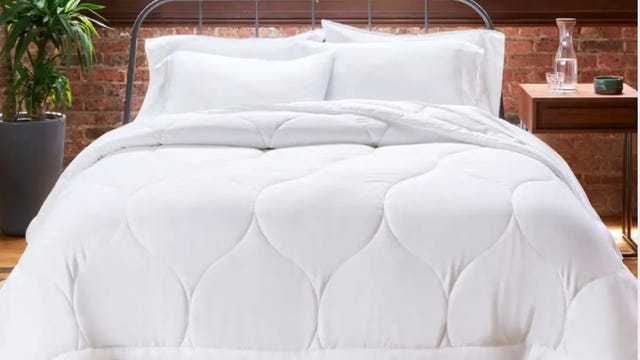

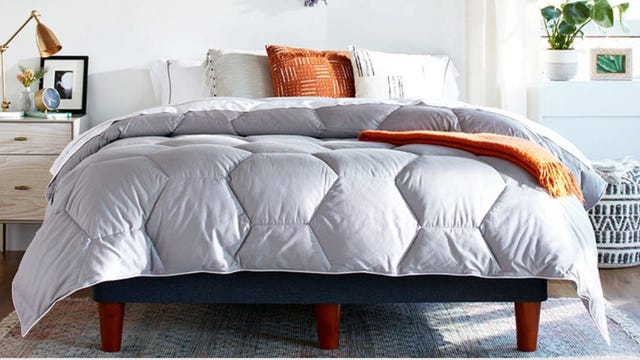
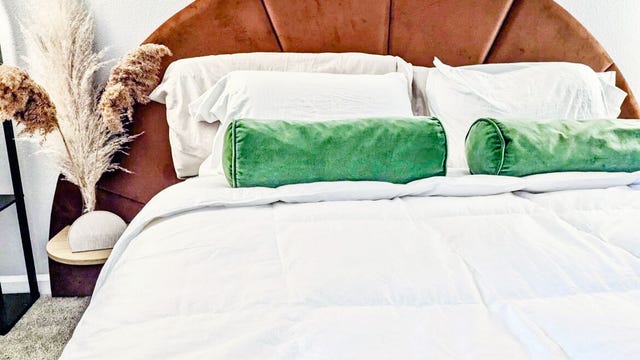
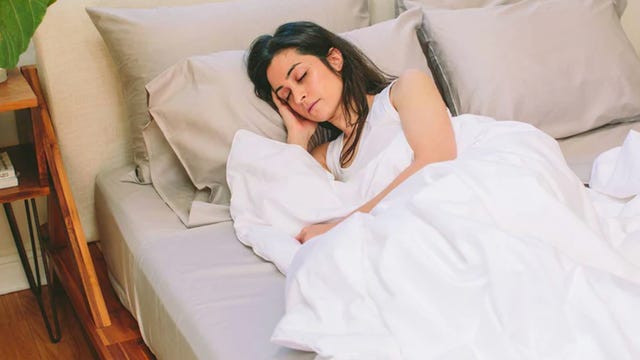

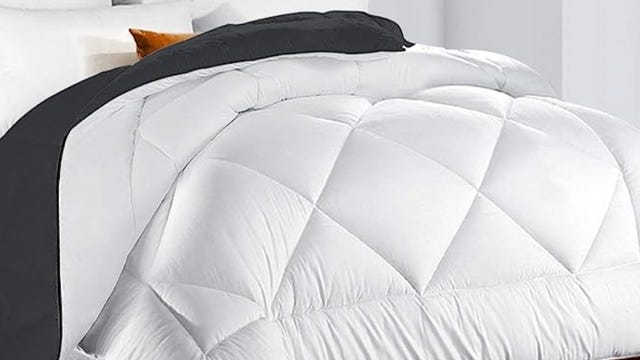










+ There are no comments
Add yours